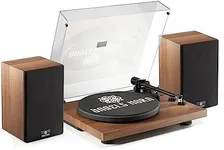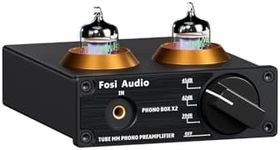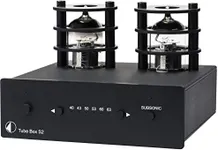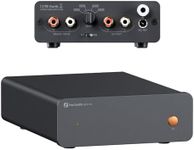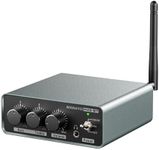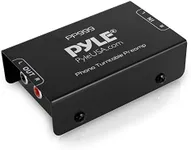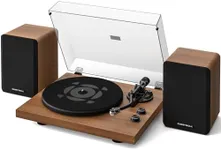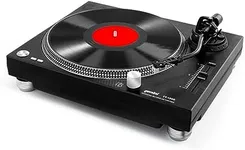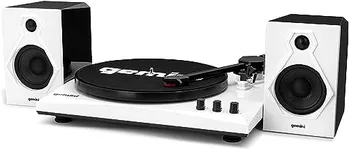Buying Guide for the Best Turntable Preamps
Choosing the right turntable preamp can significantly enhance your vinyl listening experience. A preamp, or phono stage, amplifies the signal from your turntable to a level that can be processed by your audio system. When selecting a preamp, it's important to consider several key specifications to ensure you get the best fit for your needs. Understanding these specs will help you make an informed decision and enjoy your vinyl records to the fullest.GainGain refers to the amount of amplification the preamp provides to the signal from your turntable. This is important because the signal from a turntable is very weak and needs to be boosted to a level that your amplifier or receiver can handle. Gain is usually measured in decibels (dB). Lower gain (around 30-40 dB) is suitable for high-output cartridges, while higher gain (50-60 dB) is needed for low-output cartridges. Choose a preamp with the appropriate gain for your cartridge to ensure optimal sound quality.
Signal-to-Noise Ratio (SNR)The Signal-to-Noise Ratio (SNR) measures the level of the desired signal compared to the level of background noise. A higher SNR means less background noise and clearer sound. SNR is typically measured in decibels (dB). For a good listening experience, look for a preamp with an SNR of at least 80 dB. If you are an audiophile or have a high-end audio system, you might prefer a preamp with an SNR of 90 dB or higher to ensure the cleanest possible sound.
Input ImpedanceInput impedance is the resistance that the preamp presents to the turntable's cartridge. This is important because it affects the frequency response and overall sound quality. Most moving magnet (MM) cartridges work well with an input impedance of 47k ohms, which is standard for many preamps. Moving coil (MC) cartridges, on the other hand, may require different impedance settings, often lower than 47k ohms. If you use an MC cartridge, look for a preamp with adjustable input impedance to match your cartridge's specifications.
Output ImpedanceOutput impedance is the resistance that the preamp presents to the next component in your audio chain, such as an amplifier or receiver. Lower output impedance is generally better because it ensures a stronger signal and less signal loss. An output impedance of less than 600 ohms is typically considered good. When choosing a preamp, ensure that its output impedance is compatible with the input impedance of your amplifier or receiver to maintain sound quality.
RIAA EqualizationRIAA equalization is a standard for the equalization curve used in vinyl records. It compensates for the way records are cut, boosting bass frequencies and reducing high frequencies during playback. This is crucial for accurate sound reproduction. Most modern preamps include RIAA equalization, but it's important to ensure that the preamp you choose adheres to this standard. If you are looking for the best sound quality, consider a preamp with precise RIAA equalization to faithfully reproduce the original recording.
Connectivity OptionsConnectivity options refer to the types of inputs and outputs available on the preamp. Common connections include RCA inputs and outputs, which are standard for most audio equipment. Some preamps also offer balanced XLR outputs, which can provide better noise rejection and sound quality, especially in professional or high-end setups. Additionally, some preamps may include USB outputs for digitizing vinyl records. Choose a preamp with the connectivity options that match your existing audio equipment and any future needs you might have.
Build Quality and DesignBuild quality and design can affect both the durability and the performance of a preamp. A well-built preamp with high-quality components is likely to provide better sound quality and last longer. Look for preamps with solid construction, good shielding to prevent interference, and quality connectors. The design can also impact usability, so consider features like easy-to-access controls and a layout that fits well with your other audio equipment. If aesthetics are important to you, choose a preamp that complements the look of your setup.
